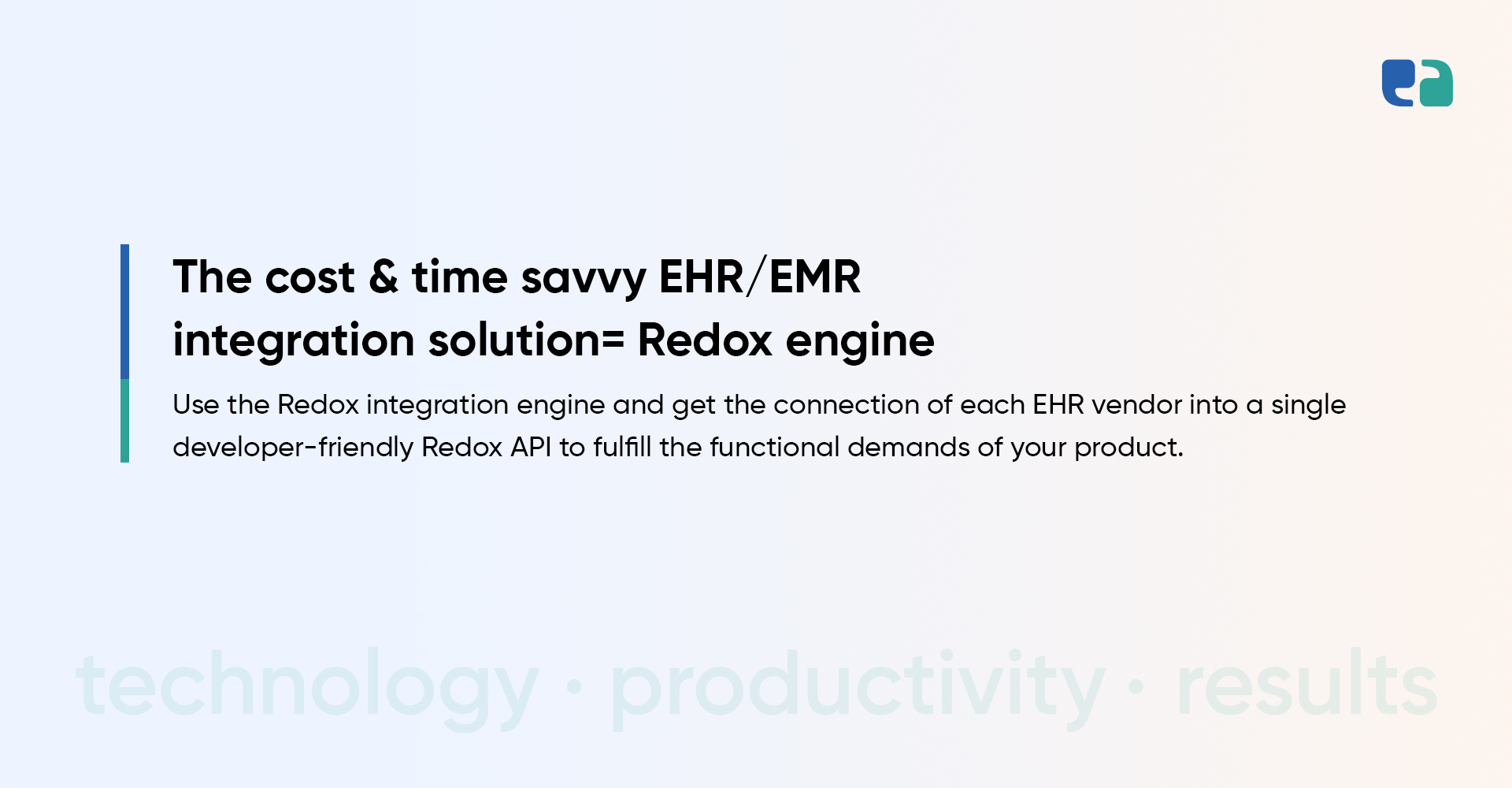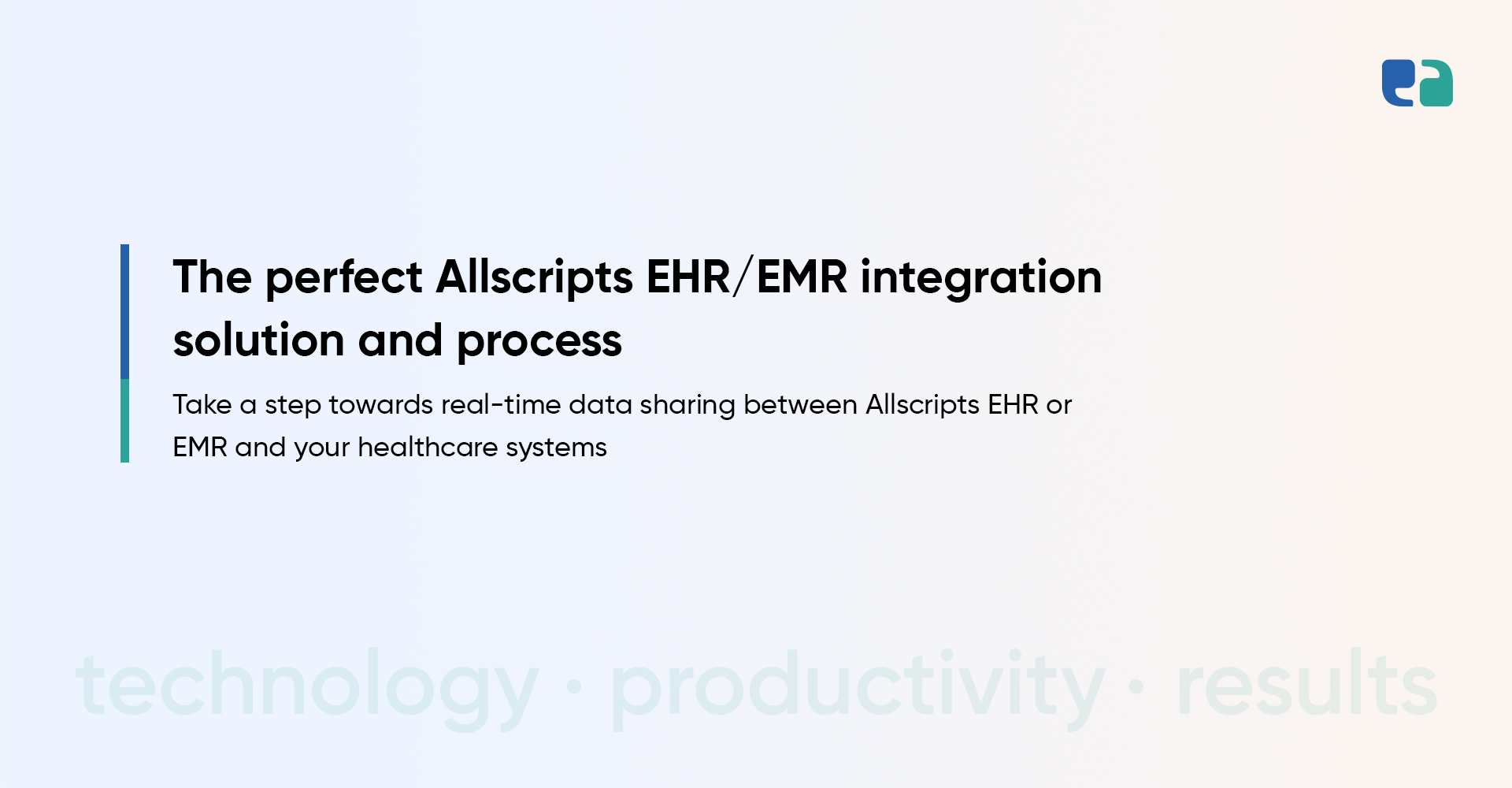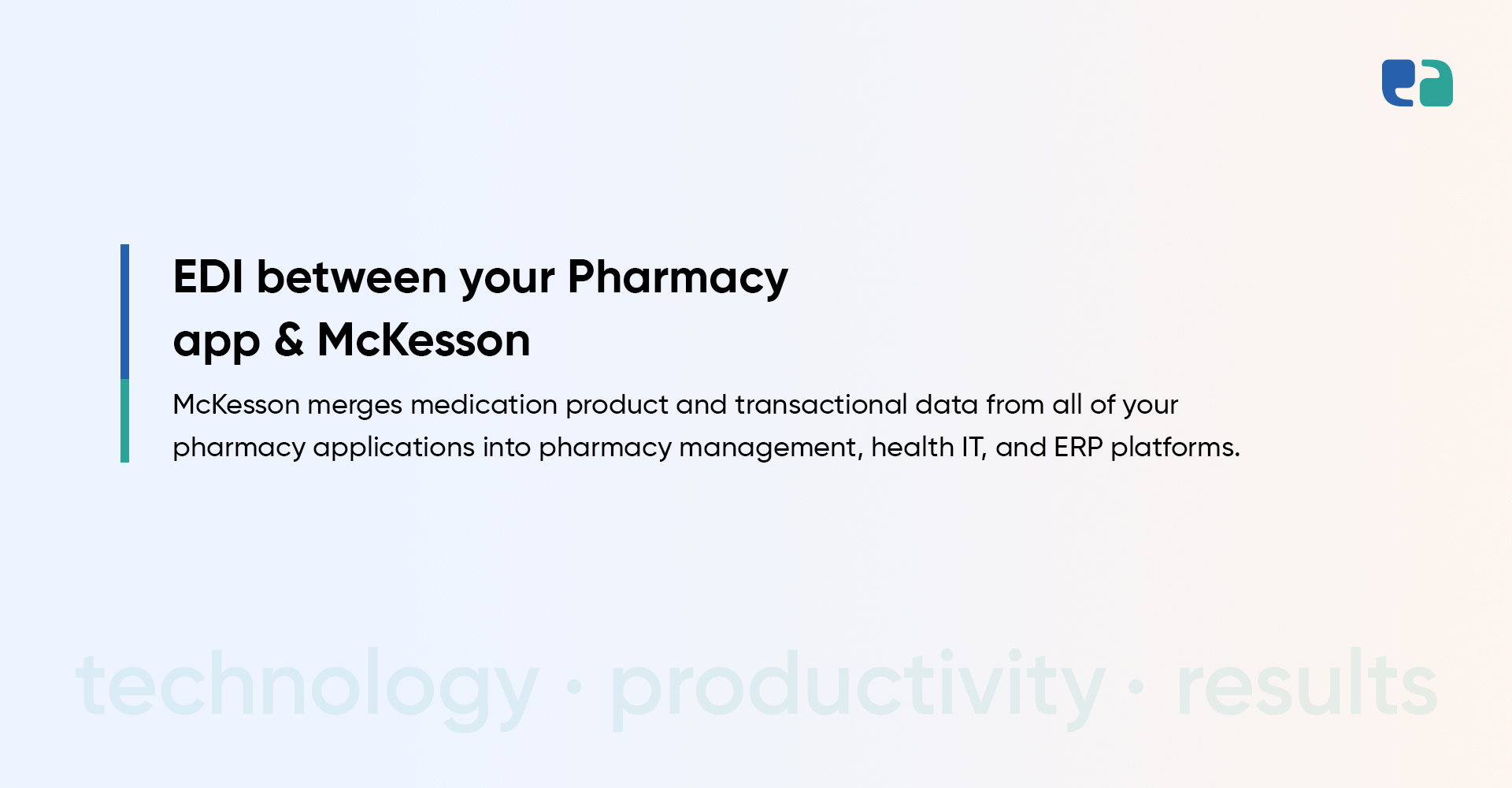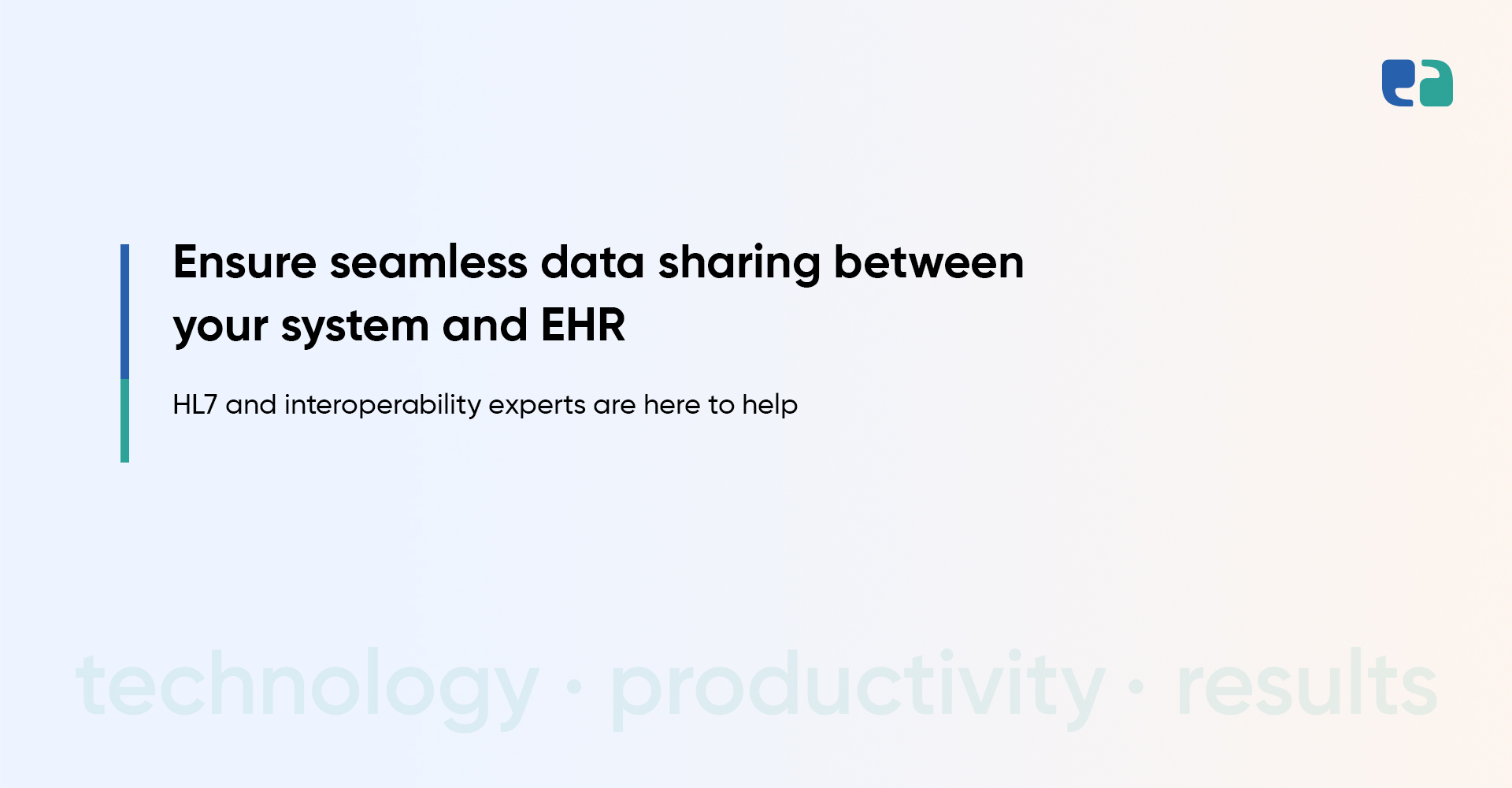Quick Summary- Building “integration as a service” in all parts of healthcare is what Redox aims at. But to understand its role as an integrator between multiple EHRs, and hospitals with other healthcare products and applications (it could be your application… so pay attention!) we need to understand what trouble spots it can solve? What can be accomplished once Redox integration is achieved? Bringing you today’s blog on how Redox integration can prove to be a cost & time- savvy EHR/EMR integration solution.
Redox integration engine, we know it sounds like something directly out of Steven Speilberg’s movie. Well… it is not, because we are here to talk to you about healthcare.
The whole scenario of integration revolves around Electronic Health Records (EHRs) as they possess crucial clinical data.
Just think for a second you have developed an application or software for healthcare providers and there is no link between the EHRs & your app and this inability to access patient’s data can be fatal. Why? Because you don’t know the patient’s medical history, allergies, or prescription.
Do not panic! That’s why we are here to guide you through the easy process of multiple EHR integrations using the Redox integration engine.
The U.S healthcare system is structured in a way as they record patient data in the form of EHRs or Electronic Medical Records (EMRs). To accomplish this they have multiple companies Epic, Cerner, eClinicalWorks, and AthenaHealth who provide these EHR and EMR services.
Underlying challenges with EHR/EMR integration
To let the healthcare providers access medical data records of patients from the same healthcare application platform, you need to integrate them with EHRs for sharing data in real-time.
Any of these EHRs like Epic, Allscripts, Cerner, and your healthcare software is not by default feasible with each other as they monitor varied workflow and follow different formats for sharing healthcare clinical data.
Result; healthcare interoperability issues that do not allow data to be shared accurately or efficiently. Posing higher privacy and security risk of data sharing.
The interoperability standards are categorized as:
- Content standards
- Transport standards
- Security and privacy standards
- Terminology and vocabulary standards
- Identifier standards
These standards come with several implementation guides as well. Making it vitally important to solve these issues for better communication among EHRs and your software.
Most of the hospitals using EHRs, use the data standard HL7 which is quite customizable but more customization, however, means that you incorporate more site-by-site variance. In addition, these EHR providers have completely distinct proprietary APIs.
Hence, it is advisable to hire IT experts like us. Who happen to have prior experience and expertise in handling these integration tasks.
What is Redox? and What trouble spots does it solve in healthcare integration?
Redox integration engine was founded by Luke Bonney, Niko Skievaski, and James Lloyd, and funded by Adams Street Partners, RRE Ventures, 406 Ventures, and Battery Ventures.
It started with the idea of “building the platform and connector to help health systems integrate with technologies in the cloud”.
Redox allows your application and a hospital or EHR(s) vendor to connect through a standard programming interface.
It enables safe communications in any format related to the electronic health record of an organization (EHR).
With every EHR system following different protocols, each integration needs to be done dedicatedly which not only increases the cost and time but also creates room for more and more errors.
To avoid this mess you can use the Redox integration engine and get the connection of each EHR vendor into a single developer-friendly Redox API to fulfill the functional demands of your product.
The Redox integration API takes the mix and match in the back end like HL7, FHIR, X12, CDA, etc. What we are trying to say is the EHR integration done using the Redox API is FHIR compliant.

What can your healthcare application do once you integrate EHRs/EMRs using the Redox integration engine?
Once you are fully integrated, here’s what you can accomplish easily with your application:
- Stay relevant on demographics and insurance of patients
- Create a new patient
- Sharing visitation documentation
- Receiving real-time patient data
- Providing wait time estimation
- Stay up-to-date on provider info
- Scheduling appointment directly
- Receiving patient’s summary
- Complete intake and triage
- Locating patient identifiers
- Initiating billing processes
Solutions you can get with Redox integration engine for executing successful healthcare interoperability: The essential point here is that this permits the EHR to remain the primary interface with which a physician interacts, with information/data transferred in and out as needed via Redox’s pipes.
The essential point here is that this permits the EHR to remain the primary interface with which a physician interacts, with information/data transferred in and out as needed via Redox’s pipes.
It’s difficult to persuade people in the hospital to look at a separate interface specifically for your application, so the ability to post data into an interface they’re currently looking at (their EHR) greatly lowers the traction.
For accomplished EHR/EMR integration Redox records:
- Every quarter, 1 billion messages ( data packets) are sent. These messages are delivered to over 1,700+ organizations that provide care.
- 90% Public health department
- 65% of the top 150 health systems in the US itself
- CommonWell and Carequality networks
- 300 autonomous healthcare product companies
You can further explore the current networks Redox is integrated with right here.
Their end users are those third-party applications or those who are planning to develop healthcare applications that want to work with the hospital’s healthcare ecosystem(s).
What role do we play while integrating EMR/EHR to save your money and time?
Have you ever moved between places, houses, or apartments? At first, you tried doing all the crazy packing and moving tasks all by yourself, and because of your vanity, you have done quite the damage.
Then you hire those movers who possess all sorts of amazing skills and tools. That gets your work done 10x faster which is worth the money you sent.
The Redox integration engine helping your application with multiple EHR integrations is exactly like that.
Where the Redox engine is the tools and healthcare IT experts like us are the movers.
Our dedicated healthcare integration experts are passionate about saving your money and time. And that’s something we can do exceptionally well. Because, we are so confident with Redox.
We are exceptionally well at one more thing – replying to you back within hours with information worth millions for your project!



